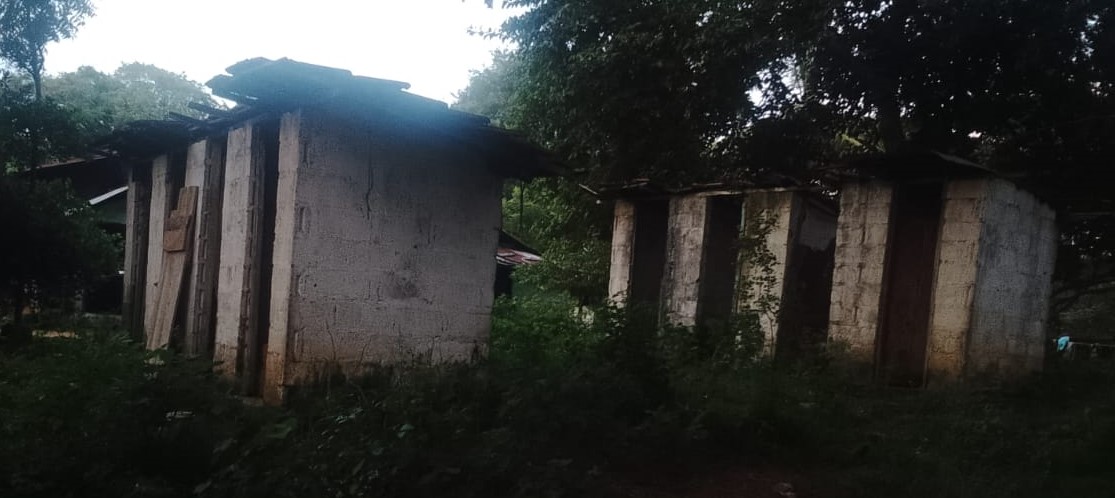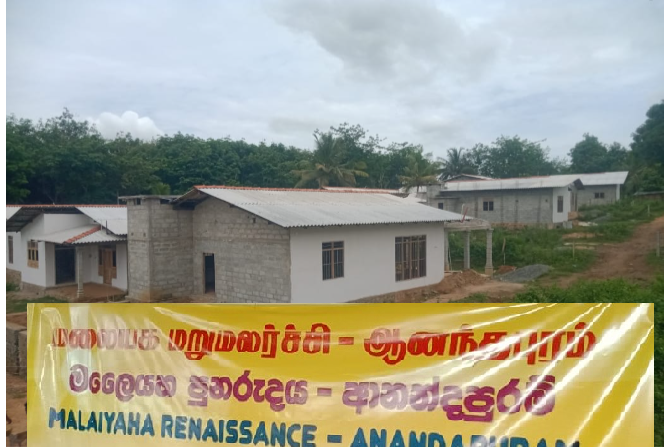By P.D. Gunathilaka
Sri Lanka, July 31, 2025 — June 25, 2025 marked a transformative moment in the lives of the Batalagoda rubber estate workers. On this historic day, 28 Tamil families, many of whom had lived and worked on the estate for generations, were granted official ownership of land—23 of them also received newly constructed homes.
This pivotal shift elevated them from “estate laborers” to proud villagers of Annanandapuram, a name that now symbolizes resilience and community.

A Struggle Rooted in History
The journey was long and often painful. These families, descendants of Tamil laborers trafficked during colonial times, had lived in Batalagoda Estate for five generations without land rights. Their ancestors journeyed from Mannar to Dambulla, passed through Medawachchiya, and eventually ended up in Kurunegala and other highland regions like Nuwara Eliya, often as slaves.

Documented by Sunil Shantha in Thittha Kahata, their history traces back to stops near Deduru Oya, where the first seeds of this tight-knit community were planted.
From Tenants to Landowners
Years of petitions, legal battles, and community organizing finally yielded results. After negotiations, the estate owners—including Mr. Ibrahim and nine other stakeholders—agreed to withdraw civil case No. 9361/L and donate 270 perches of land to the workers. This act was not a gesture of charity but the fruit of relentless advocacy and collaboration.
A Coalition of Support
This success was powered by a coordinated effort among workers, civil society groups, and grassroots organizations:
- Institute of Social Development (ISD) and Devasaran Development Centre implemented social harmony programs in Kurunegala.
- The workers participated in exhibitions and walks spotlighting the 200-year history of estate laborers.
- HR activist Ruki Fernando and others used media and social platforms to amplify the workers’ voices.
- Legal backing was offered by Law and Social Trust, while MDDR and People’s Council helped formalize agreements.
- Youth collectives assisted with electricity and Mollar Institute improved infrastructure.
- Grassrooted Trust and Women’s Development Foundation empowered community members through education.
- IPEN and Palmera Foundation raised Rs. 25 million to construct 23 modern homes.
Unity Across Communities
What made this movement extraordinary was not just its outcome but the collective compassion it inspired. Support came not only from organizations but also from local Muslim and Sinhala communities, fostering cross-cultural solidarity.
Human rights advocate Sentril Sivagnanam played a vital facilitating role, and estate officers like Mr. Faisal and Mr. Azad actively contributed.
A New Beginning
The birth of Annanandapuram isn’t just a name change—it’s a triumph of dignity, identity, and collective resistance. It sets an example for communities across Sri Lanka striving for recognition and justice.
These 28 families have redefined what it means to rise—together.
(Adopted from a Sinhala language article written by P.D. Gunathilake, who has been a social justice activist for decades and at present the secretary of the Devasarana Development Centre.)
Images by Badra Wickremasinghe.
(c)SLB
